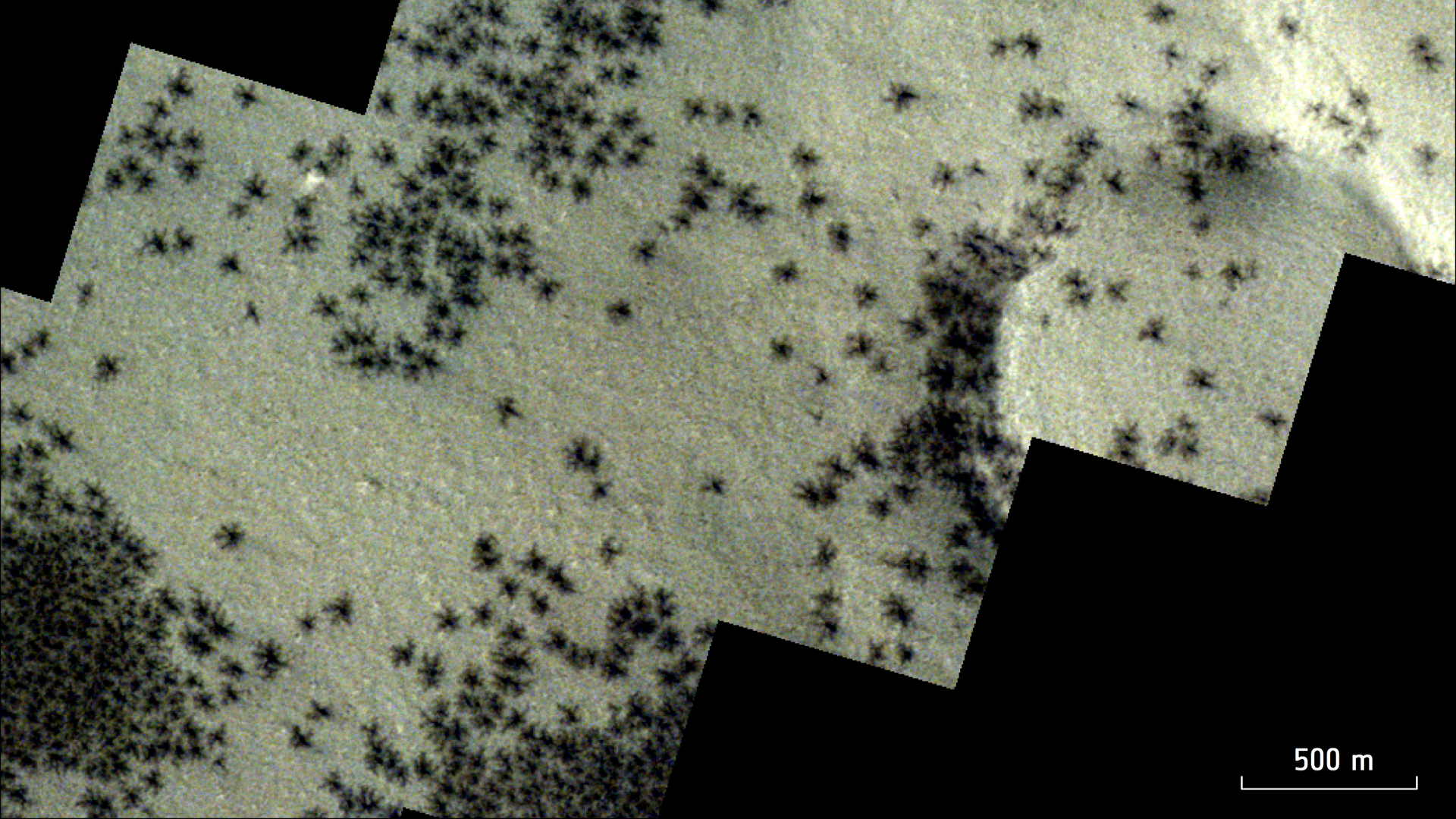
Seasonal, spider-like features have been spotted sprouting through cracks in Mars' surface.
The European Space Agency's Mars Express orbiter captured new images of small, dark features that resemble spiders scuttling across the Martian region known as Inca City near the Red Planet's south pole.
This phenomenon appears when spring sunlight warms layers of carbon dioxide deposited during the dark Martian winter. In turn, carbon dioxide ice in the bottom layer turns into gas, which builds up and eventually breaks through overlying ice up to 3.3 feet (1 meter) thick, according to a statement from ESA.
Related: Thousands of strange white rocks found on Mars. Will they ever be brought to Earth?
The released gas carries dark dust from the underlying ground upward, ultimately forcing the dust to explode out of the top ice layers like water from a geyser before settling on the surface. This creates the cracked, spidery formations measuring 0.03 to 0.6 miles (45 meters to 1 kilometer) across.
Mars' Inca City, formally known as Angustus Labyrinthus, exhibits a linear, almost geometric network of ridges like the Inca ruins on Earth. It is part of a circular feature approximately 53 miles (86 km) wide, suggesting it may be an impact crater with ridges formed by lava rising through the fractured Martian crust and eroding over time.
"We're still not sure exactly how Inca City formed," ESA officials said in the statement. "It could be that sand dunes have turned to stone over time. Perhaps material such as magma or sand is seeping through fractured sheets of martian rock. Or, the ridges could be 'eskers,' winding structures related to glaciers."
The most recent images of Inca City were taken by Mars Express' High Resolution Stereo Camera (HRSC) on Feb. 27, 2024, during the autumn season on Mars. The Cassis (Color and Stereo Surface Imaging System) instrument aboard ESA's ExoMars Trace Gas Orbiter previously documented the same spider-like features near Mars’ south pole on Oct. 4, 2020. The next Martian spring equinox will be on November 12, 2024.







